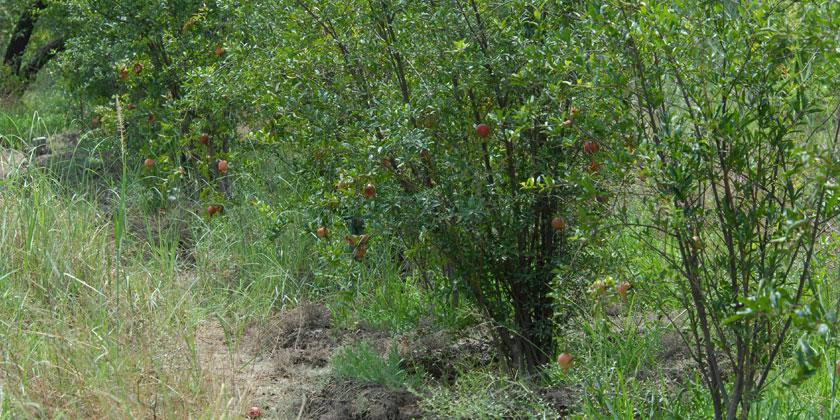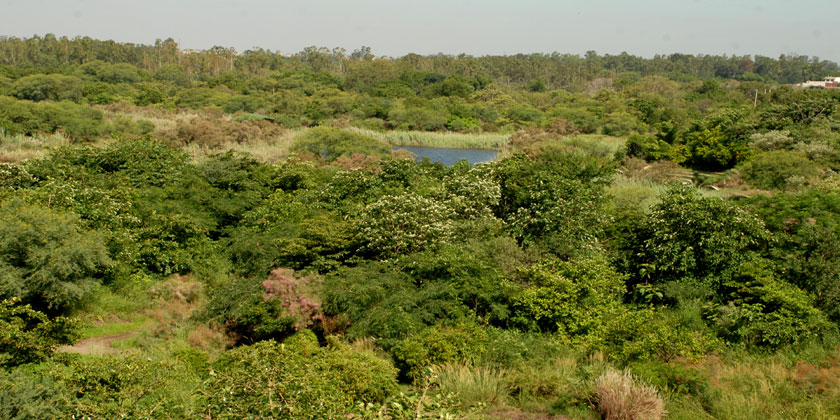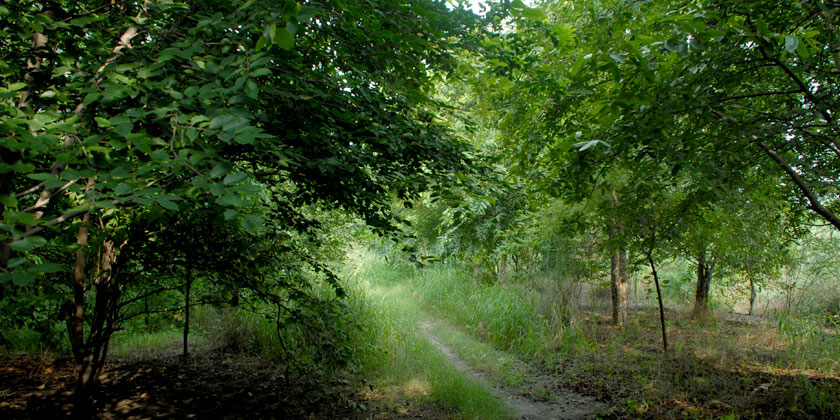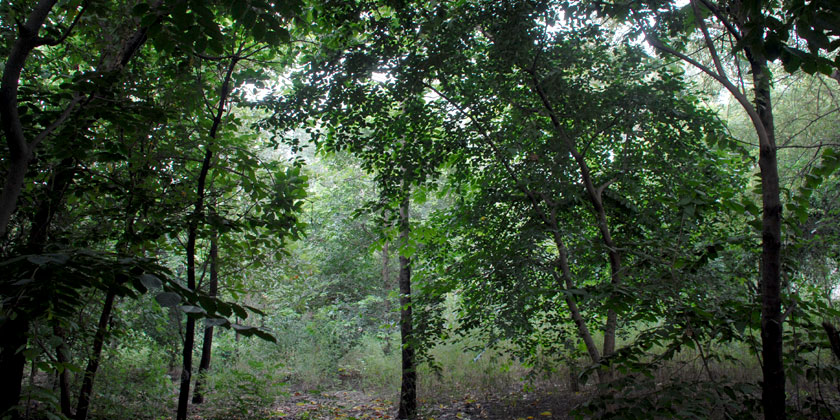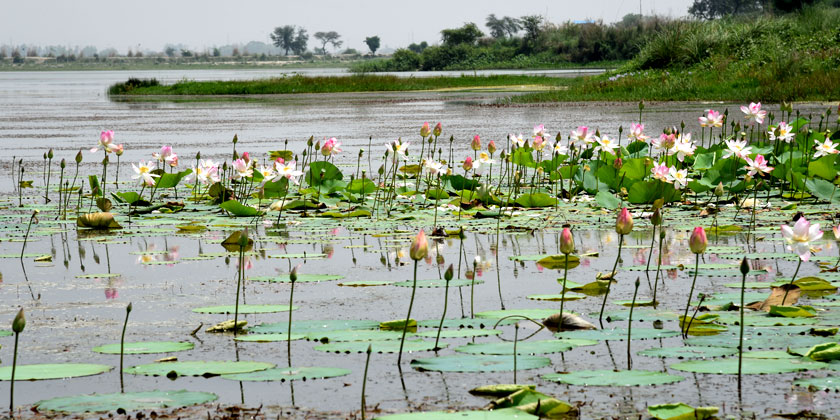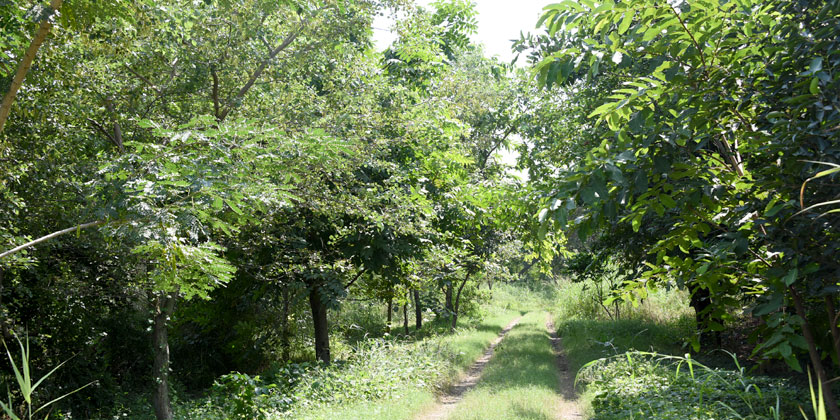Yamuna Biodiversity Park
Emerging as the capital’s most visited public place and prominent center for learning and understanding the environment, the Yamuna Biodiverstity Park has become a home for a diversity of forest communities, biologically rich wetlands, grassland communities, a wide variety of fruit yielding species and an abundance of medicinal herbs. The Park also comprises native flora and fauna which used to exist many decades before and then became extinct locally. It further, acts as a natural conservation site for specific group of endangered plants. The Yamuna Biodiversity Park is presently spread over an area of approximately 457 acres near Wazirabad village on the western bank of the river Yamuna.
The park features two major zones - the visitor zone and the nature reserve zone.The front portion of the Yamuna Biodiversity Park, a 220m southward and 140m northward stretch from the main entry gate with 20-30m width is demarcated as Domesticated Biodiversity Zone. Enclosed by a hedge of poplar, it features plants like Ailanthus, Butea and Bauhinia that have a continuous seasonal interest due to their long flower production throughout the season. The outer iron fencing is embraced by multi-coloured climbers like Jasmine and Quisqualis with the same theme of continual luxury.
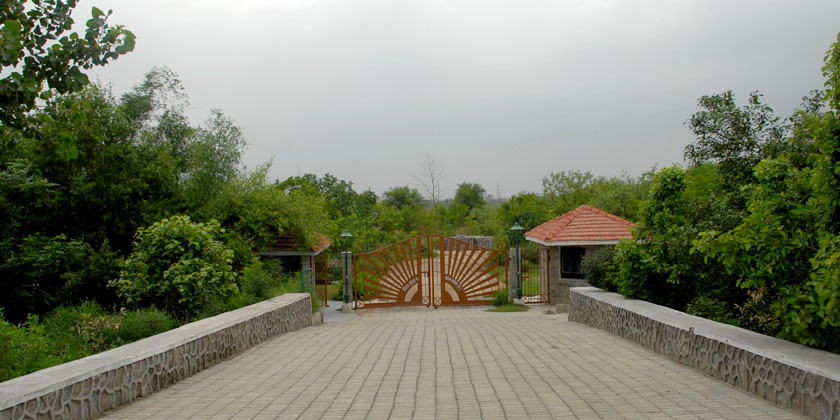
Located at the main entrance, at the southward end, are three snack bars, a drinking facility and three resting places covered up with the vines of native plants. Just past the entry pocket and to the right is a “Welcome Rock facet” representing the origin of the Ganga and Yamuna and their convergence at Allahabad.
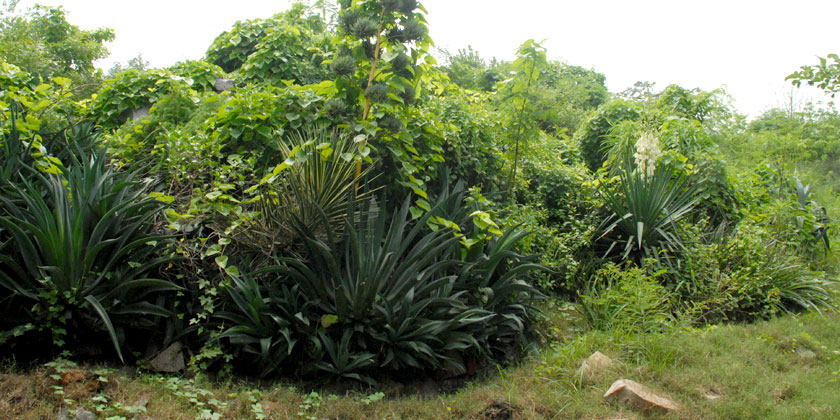
The trail leads to the Bambusetum, the Nature interpretation Centre, the Conservatory of fruit yielding species, the Migratory duck’s wetland and the Nature Reserve area. On the left, the landscaping provides two shallow valleys representing rangelands with 10 mounds representing different ecosystems present from the foothills of the Himalayas (Siwaliks) through the Yamuna basin, till the point of confluence of the Yamuna and Ganga. The first rangeland i.e. Rangeland 1, corresponds to an exclusive Sporobolus diander dominance while the second one i.e. Rangeland 2 showcases a mixture of native tropical grasses such as Dichanthium, Chrysopogon, Vetiveria, and Bothriochloa. These two rangelands are bordered by a serpentine trail. The first loop of the trail connects Rangeland 1 with Herbal garden, sacred grove and Rangeland 2 while the other loop leads to the butterfly conservatory and amphitheatre. The amphitheatre is an open auditorium where lots of events and activities are organized. The herbal garden offers a collection of about 450 plant species with healing properties.
On this loop trail one sometimes comes across bouncing hares and has a chance to watch red-wattled lapwings and other grassland birds. The exit of the Butterfly Conservatory leads to Sacred Grove and the Gene Bank of Petro- and Oil-yielding and other plants through the Bamboo Bridge from which one can enjoy a view of resident ducks’ wetland and a wide variety of fishes.
The trail on the Welcome Rock Facet leads to the Nature interpretation Centre, a beautiful classical building with elegant lighting, a red carpet floor, attractive interior designs, panels depicting various biodiversity levels, touch screens, and visual-aids that provide an insight into the basic concepts of biodiversity.
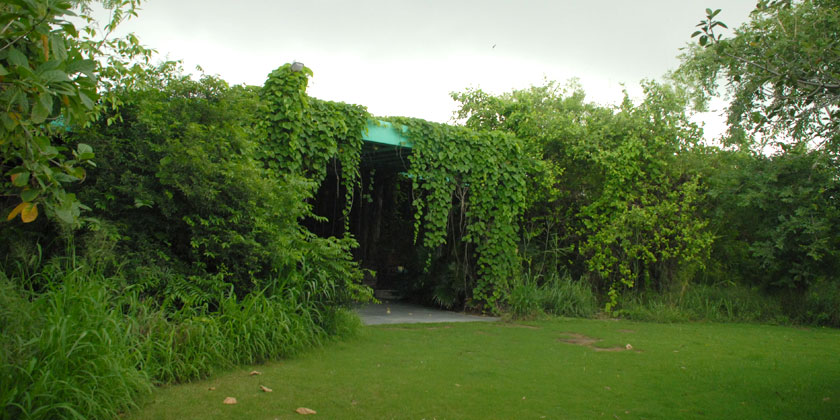
Ten Mounds in the visitors’ area illustrate the different forest ecosystems in its miniature form found all along the Yamuna River Basin. The composition of forests, as in nature, consists of three to four layers: a tree canopy that supports climbers and provides shade for the middle storey tree layer and shrub layer which in turn protect the ground-cover of herbs and grasses. Plantation on these mounds is designed on the basis of the structure and composition of the forest ecosystem found in its natural environment.
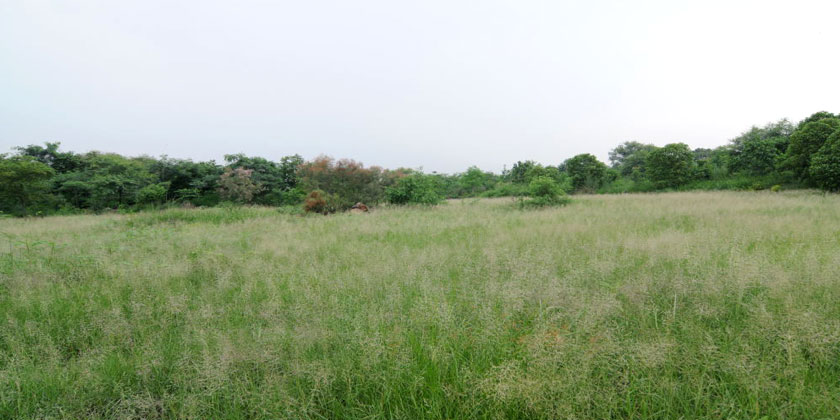
The display of about 500 varieties of 80 species of fruit yielding plants in a small area reveals the astounding diversity found amongst fruiting plants. The conservatory provides some unfamiliar fruits in addition to many familiar ones. Khirni (Mimusops hexandra) – a locally extinct species is thriving as are Kaith (Feronia limonia), pomegranate (Punica granatum), sapota (Achyrus sapota), jamun (Syzygium cumuni), gauava (Psidium guajava), amla (Emblica officinalis), Citrus sp., grapes (Vitis sp), loquat (Eriobotrya japonica) and ber (Zizyphus mauritiana). The conservatory houses a variety of birds such as parakeets, yellow footed green pigeons, munias, babblers, coppersmith barbets, bulbuls and peafowl in large flocks, as well as diversity of snakes.
